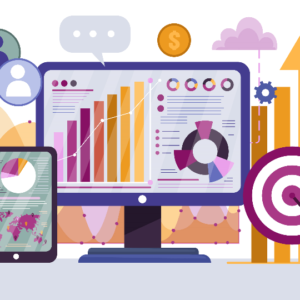A guest blog from Lorraine Moalosi of Data Talks. Please connect with Lorraine if you have any questions about her work.
Women’s sports are all the rave at the moment. And rightfully so. From Barcelona breaking world record attendance for a women’s football match to cricket registering record attendance at the T20 World Cup final – it’s safe to say that things are looking up. However, this is not something new. Did you know that in 1920, women’s football was already breaking records? In spite of that, for the next 100 years or so, women’s sports would be negatively affected. From the FA ban on women’s football to restrictions on games women could compete in at the Olympics, women in sports have travailed much. Since this success is not new, one could ask, what makes the success of women’s sports different this time around?
Well, the answer to this not only addresses this question but addresses many others as well. Such as, what should women’s sports continue to do to enjoy more success and how do we build women’s sports for longevity and sustainability. After all, it would indeed be a shame if history repeated itself.
I drive a women in sports initiative called Women in sports: beyond the hashtag at a Swedish Customer Data Platform (CDP) vendor called Data Talks. And as part of this initiative, I have had many conversations with industry experts actively involved in women’s sports. Through that, and the extensive experience we have in sports and through research, I have identified 4 key factors that will ensure that women’s sports stay on this upward trajectory.
4 key factors that will strengthen women’s sports
Working data-driven
One of the biggest concerns in women’s sports has always been the lack of investment. But thanks to data, proving a return-on-investment (ROI) on sponsorship deals, for example, has only gotten better. And investors and sponsors follow the ROI after all. Therefore, the ability to work data-driven sets today’s women’s clubs and organizations on a stronger path to boosting sponsorship value, for example. Understanding fans and improving fan engagement is another use case for working data-driven. Additionally, selling more tickets, and merchandise as well as filling the stadium becomes easier when you work data-driven.
In a nutshell, working data-driven is the key to greater and more sustainable success
in women’s sports.
Digitalisation
Did you know that, on average, women’s sports only get 7% of all media coverage globally? So what have they had to do? Well, they have had to find digital ways to reach their supporters. These include broadcasting on Over-the-top streaming services and not just traditional media such as TV. A great example of this is UEFA’s deal with DAZN and YouTube, which is set to bring women’s football to millions of viewers online. Social media is yet another example of how digitalisation helps women’s sports. Women in sports and clubs and organizations use social media to amplify their voices and increase their visibility.
In sum, continuing to make use of digital platforms will help strengthen women’s
sports.
Finding new revenue sources
Visibility is crucial in sports. Furthermore, it is pivotal to increasing revenue. Without it, clubs don’t have bargaining power for TV rights and sponsorship deals. As discussed above, women’s sports have had very little visibility. Naturally then, they have had to find new revenue sources. It is this creativity that has helped them get back their glory. Once again, OTT and social media have been key contributors in this area too. Women in sports have been able to increase their income through OTT ad revenue and social media promotions and sponsorships.
Now, it is important that this creativity continues. Just because these two examples work today does not mean that there aren’t new opportunities to explore. So, innovation is key. Pair this with working data-driven and you are set for life.
Storytelling
Last, but certainly not least, is storytelling. In fact, this is what we focus on with our women in sports initiative.
“Storytelling has the incredible ability to connect people on a deep,
emotional level. It brings us together as we feel empathy for one another,
laugh together and relate to someone else. Figures and stats aren’t
emotionally charged and interesting. People want to hear stories that are
relatable and trigger feelings within them” (Lucidpress).
Women’s sports are no different. Although people are compassionate towards the struggles of women in sports, just hearing a broad narrative does not inspire them to engage and want to make a difference. However, hearing individual stories of incredible women in sports does. So, it is important that you leverage this tool. You can use social media, for example, podcasts, blog posts, and so on.
Action points for those involved in women’s sports
In sum, I want you to know that the odds are in your favour. You don’t have to believe me but believe the research. With this knowledge in mind, you need to find ways of ensuring that you are working smarter and not just harder. The best way to do this is to in some way, shape, or form, work data-driven. Of all the key factors we discussed in this post, this one is the most paramount. Data is your biggest asset.
There are many options available for you. These include using customer relationship management system (CRM), a customer data platform (CDP) such as Data Talks, or just simply doing email marketing. This focus depends on your needs. But the main point is, just get started. It does not matter how large or small your organisation is. You too can get started today.
This guest post is written by Lorraine Moalosi of Data Talks and does not necessarily reflect the thoughts of Winners. Please contact Lorraine directly to discuss anything about this post, women’s sports, the use of data, or Data Talks.




